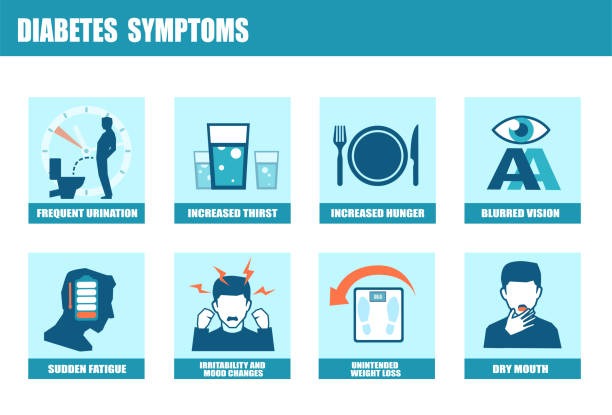Guillain-Barré Syndrome (GBS) is a rare but serious neurological disorder that can strike suddenly and escalate rapidly. For many people, hearing about Guillain-Barré Syndrome for the first time raises questions and concerns — what is it? How does it happen? And most importantly, what are the symptoms, treatments, and outlook? In this post, we’ll break down the essentials of Guillain-Barré Syndrome to help you understand this complex condition.
What Is Guillain-Barré Syndrome?
Guillain-Barré Syndrome is an autoimmune disorder where the body’s immune system mistakenly attacks the peripheral nerves — the nerves outside the brain and spinal cord. This immune attack causes inflammation that damages the protective covering of the nerves (myelin) or the nerves themselves. The result is nerve weakness and sometimes paralysis.
Because the peripheral nerves control muscle movement and sensation, GBS primarily affects these functions. Although rare, GBS is considered a medical emergency because symptoms can worsen quickly and may require immediate medical attention.
What Causes Guillain-Barré Syndrome?
The exact cause of Guillain-Barré Syndrome remains unknown. However, in many cases, GBS is triggered by an infection. Common triggers include respiratory infections, gastrointestinal infections, and certain viral illnesses such as:
- Campylobacter jejuni (a common cause of food poisoning)
- Influenza (the flu)
- Cytomegalovirus (CMV)
- Epstein-Barr virus (EBV)
- Zika virus
In rare cases, GBS has been associated with vaccinations, surgeries, or trauma, but these links are extremely uncommon. The condition arises because the immune system, in its attempt to fight the infection, gets confused and mistakenly attacks the body’s own nerve cells.
Who Is at Risk?
Guillain-Barré Syndrome can affect anyone, regardless of age, sex, or ethnicity. However, it is slightly more common in adults and males. Most cases occur in people aged 30 to 50, but children can also develop GBS. The syndrome is very rare, with an estimated incidence of 1 to 2 cases per 100,000 people each year worldwide.
Symptoms to Watch For
GBS symptoms usually start suddenly and progress over days or weeks. The hallmark sign is weakness that typically begins in the legs and spreads upward. Here’s what you might notice:
- Tingling or “pins and needles” sensation: Often the earliest symptom, especially in the toes and fingers.
- Muscle weakness: Starting in the legs, moving to the arms and upper body.
- Difficulty walking or climbing stairs: Weakness may make movement unsteady.
- Loss of reflexes: Such as the knee-jerk reflex.
- Severe cases: Weakness can lead to partial or complete paralysis.
- Other symptoms: Pain, difficulty with eye movement, facial weakness, difficulty swallowing or speaking, and even breathing problems if the chest muscles are affected.
Because symptoms can escalate quickly, it’s critical to seek medical care promptly if you or someone you know experiences these signs.
How Is Guillain-Barré Syndrome Diagnosed?
Diagnosing Guillain-Barré Syndrome can be challenging because early symptoms resemble other neurological disorders. Doctors typically use a combination of:
- Medical history and physical examination: Noting rapid onset weakness and loss of reflexes.
- Lumbar puncture (spinal tap): To check for increased protein levels in cerebrospinal fluid, a sign of nerve inflammation.
- Electromyography (EMG) and nerve conduction studies: To evaluate the electrical activity of muscles and nerves.
- Blood tests: To rule out infections or other causes.
Early diagnosis is crucial for effective treatment and preventing serious complications.
Treatment and Management
There is no cure for Guillain-Barré Syndrome, but early treatment can significantly improve outcomes. The main treatment options include:
- Intravenous Immunoglobulin (IVIG): This therapy involves giving healthy antibodies to help stop the immune system from attacking nerves.
- Plasma exchange (plasmapheresis): A process that removes harmful antibodies from the blood.
- Supportive care: Including physical therapy, pain management, and monitoring breathing function.
In more severe cases, patients may require hospitalization, and mechanical ventilation might be necessary if the muscles involved in breathing become weakened. Recovery usually occurs gradually but can take several months or even years.
For specialized care, consulting a Neuropathy Treatment Clinic can be invaluable. These clinics offer comprehensive management tailored to nerve disorders, ensuring patients receive the most effective therapies and rehabilitation support throughout their recovery journey.
What Is the Prognosis?
The outlook for Guillain-Barré Syndrome varies widely. Many patients experience significant recovery within weeks to months, especially if treatment begins early. Approximately 70% of people recover fully or with minor residual weakness. However, some may face ongoing symptoms like fatigue, weakness, or numbness for years.
In rare cases, GBS can cause serious complications like respiratory failure or autonomic dysfunction (problems with heart rate and blood pressure control), which require close medical monitoring.
Living with Guillain-Barré Syndrome
Recovering from Guillain-Barré Syndrome can be a physically and emotionally challenging journey. Rehabilitation, including physical and occupational therapy, plays a vital role in helping patients regain strength and independence. Support from family, friends, and healthcare professionals is also important.
If you or a loved one has been diagnosed with GBS, it’s essential to follow up regularly with your healthcare team and report any new or worsening symptoms immediately.
Final Thoughts
Guillain-Barré Syndrome may be rare, but awareness is key. Recognizing early symptoms and seeking immediate medical attention can make a significant difference in recovery. While the disorder can be frightening, advances in treatment have improved outcomes dramatically.
If you ever experience sudden weakness, tingling, or difficulty walking, don’t hesitate to get evaluated. Early diagnosis and treatment save lives and reduce long-term complications. Knowledge and prompt care are the best tools to face Guillain-Barré Syndrome.



